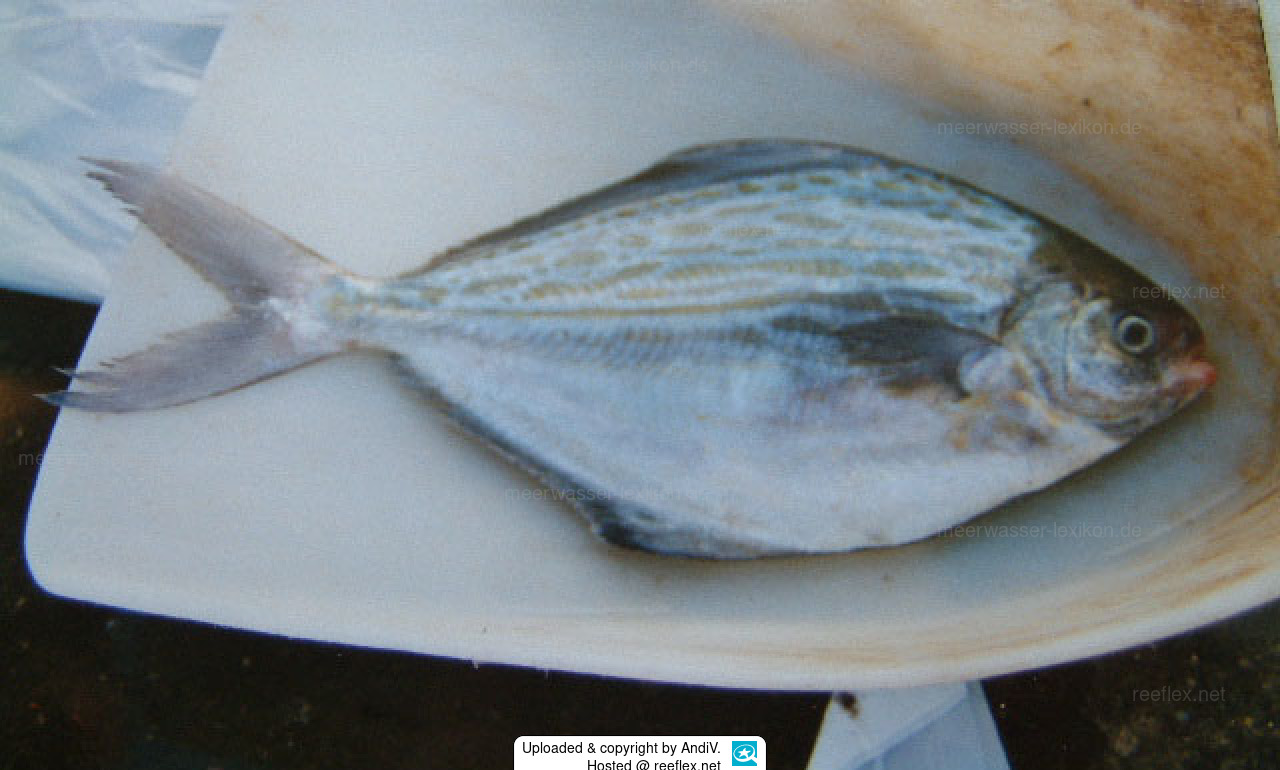Info
Stromateus fiatola, even called Blue butterfish or ceiling fish, are found mainly in non-tropical waters of the eastern Atlantic off the coast of England to the Canary Islands. Further south again along the Atlantic coast of South Africa where the pictures were being taken in very plankton-rich waters.
The body color is usually gray-blue silvery, juvenile animals show several narrow transverse bars, and often small darker spots. Adult animals can be seen mostly in larger swarms, juvenile often to be found close to jellyfish under whose protection they grow up. They „thank“ the protection of the jellyfish by eating it by and by.
First they feed on zooplankton as a juvenile and later by small fish, various crustaceans, salps and jellyfish. Aquaristic they are rather uninteresting, and usually reach a final length of about 35 cm, individual specimens reach max. about 50 cm.
Synonyms:
Chrysostromus fiatoloides (Lacepède, 1802)
Fiatola fasciata (Risso, 1827)
Seserinus microchirus (Cuvier, 1833)
Stromateus capensis (Pappe, 1853)
Stromateus fasciatus (Risso, 1827)
Stromateus microchirus (Cuvier, 1833)
hma
The body color is usually gray-blue silvery, juvenile animals show several narrow transverse bars, and often small darker spots. Adult animals can be seen mostly in larger swarms, juvenile often to be found close to jellyfish under whose protection they grow up. They „thank“ the protection of the jellyfish by eating it by and by.
First they feed on zooplankton as a juvenile and later by small fish, various crustaceans, salps and jellyfish. Aquaristic they are rather uninteresting, and usually reach a final length of about 35 cm, individual specimens reach max. about 50 cm.
Synonyms:
Chrysostromus fiatoloides (Lacepède, 1802)
Fiatola fasciata (Risso, 1827)
Seserinus microchirus (Cuvier, 1833)
Stromateus capensis (Pappe, 1853)
Stromateus fasciatus (Risso, 1827)
Stromateus microchirus (Cuvier, 1833)
hma







 AndiV
AndiV

